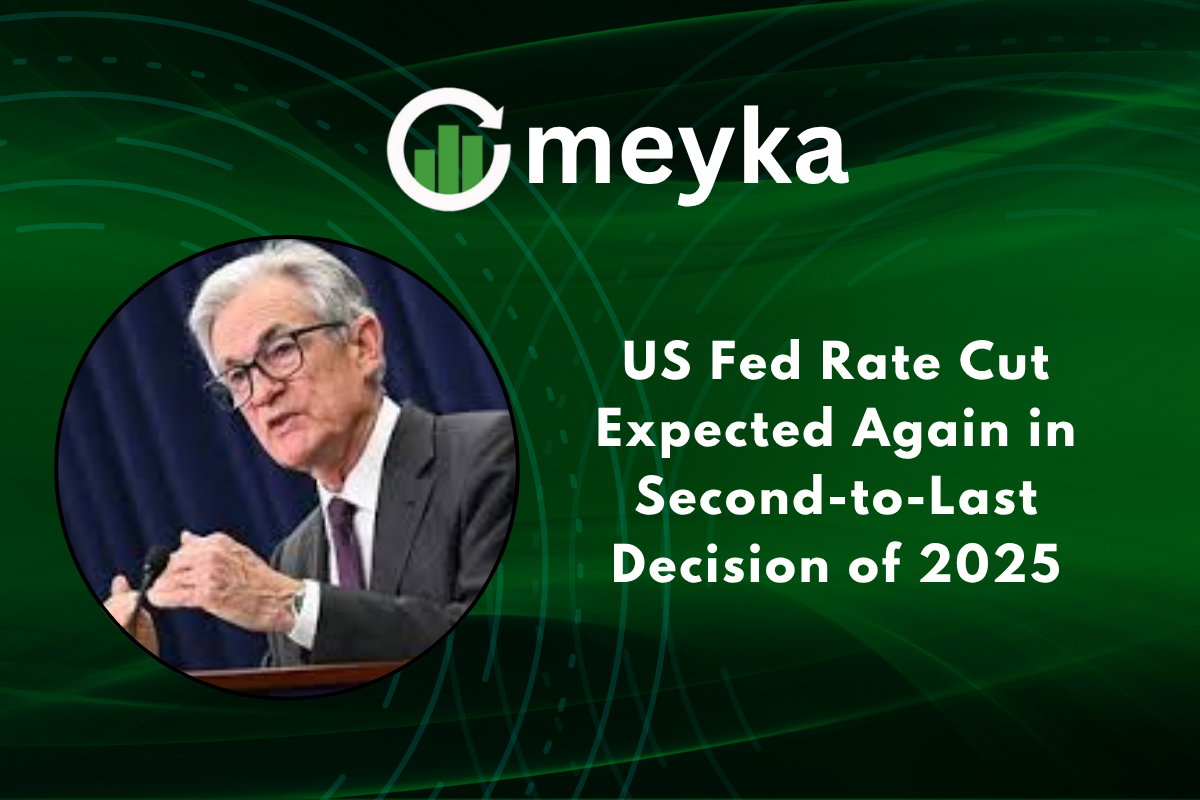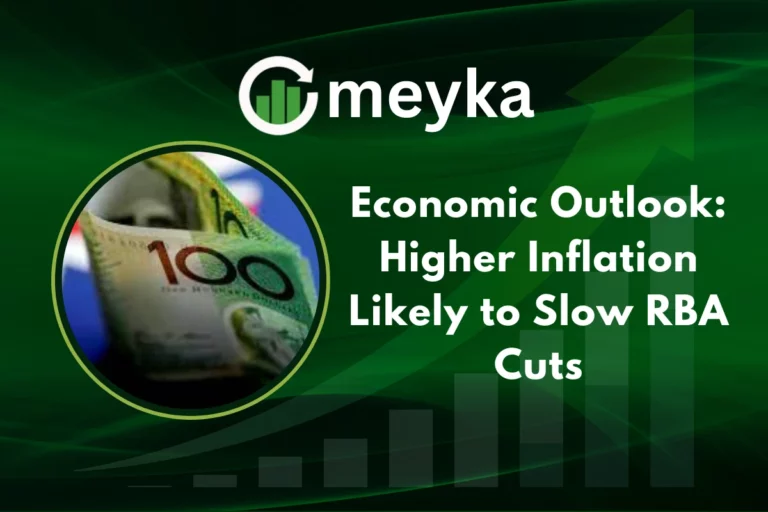US Fed Rate Cut Expected Again in Second-to-Last Decision of 2025
The US Fed Rate Cut is widely expected at the Federal Reserve’s penultimate policy meeting of 2025 (October 28–29). Markets are pricing a 25-basis-point reduction as policymakers respond to softer job data, easing inflation signals, and the unusual reporting gaps caused by the government shutdown.
US Fed Rate Cut: Why a cut is likely now
What is driving the move?
The Fed is watching a mix of signals. Hiring has slowed, weekly unemployment claims have ticked up, and recent inflation readings have come in a bit softer than feared. That combination gives officials room to ease policy to support growth while inflation remains on a slow path toward the target.
Why is the Fed cutting rates again? Policymakers have flagged a weakened labour market and contained inflation as reasons to trim borrowing costs. The decision is also shaped by missing official data during the recent U.S. government shutdown, which leaves the Fed working with partial information.
US Fed Rate Cut: The expected decision and timeline
What will the Fed likely do at the Oct 28–29 meeting?
Wall Street and most economists expect a 25-basis-point cut, taking the federal funds rate into a lower range (market pricing centers around 3.75%–4.00%). The announcement and the Fed statement will come at 2 p.m. EDT, followed by Chair Jerome Powell’s press conference.
How certain is the market? Surveys and futures markets show high odds of a quarter-point cut, though some Fed members could dissent. Policymakers have signalled gradual easing rather than aggressive moves, aiming to balance growth and inflation risks.
US Fed Rate Cut: What it means for stocks and bonds
How do markets react to the expected cut?
Stocks typically like lower rates, which reduce borrowing costs and boost valuations for growth companies. Bond yields often fall as Fed policy loosens, but short-term market swings can be volatile if the Fed’s message or forward guidance surprises investors.
Investor sentiment was visible on social media as traders parsed headlines and positioning. See a snapshot of trader reaction here:
Will tech and financials move differently? Growth sectors like tech often rise on cuts, while banks can struggle because narrower interest margins reduce lending profits. The net effect depends on how the Fed frames future cuts and the economy’s path.
US Fed Rate Cut: Impact on housing and consumers
What happens to mortgage and loan rates?
A Fed cut tends to lower short-term interest rates quickly, but mortgage rates, which are tied to longer-term treasury yields, may fall only gradually. Homebuyers could see some relief over the months, but closing costs and long mortgage locks can delay visible improvement.
Public conversation around mortgage effects and affordability has already surfaced, see mainstream coverage and public reaction here:
Should borrowers expect instant savings? Not always. Consumer loan costs like credit cards and auto loans may ease faster, but mortgage repricing depends on the 10-year Treasury and lender practices. Home-buying costs usually move with a lag.
US Fed Rate Cut: Fed voices and analyst views
What are Fed officials saying?
Fed Chair Jerome Powell and several regional Fed leaders have acknowledged labour-market softness and signalled a cautious easing path. Some officials favor a gradual approach, while a few push for faster cuts if data weakens further.
Economists note the decision rests partly on incomplete data due to the shutdown, so the Fed will use local business surveys and secondary indicators to judge conditions. Market analysts emphasize that Powell’s press conference will be the main guidance source in lieu of updated Fed projections.
Traders and bond markets also reacted to X as they adjusted yield forecasts; bond-market commentary captured real-time swings:
US Fed Rate Cut: Risks and what could go wrong
What are the biggest risks?
Two main risks: an inflation rebound that forces the Fed to pivot back to tighter policy, and an overcorrection that leaves the economy with higher inflation later. The government shutdown and trade/tariff tensions add extra uncertainty to the outlook.
Could the Fed make a mistake? Yes. If the Fed cuts too far or too fast, inflation could re-accelerate. If it tightens too much before data confirms weakness, it could deepen a slowdown. Officials aim to avoid both by moving gradually and emphasizing data dependence.
US Fed Rate Cut: Historical context and path through 2025
How has the Fed moved this year?
2025 saw a shift to easing after a long period of tightening. The Fed cut rates in September and is now expected to cut again in October, with December widely viewed as the final meeting of the year where another easing decision could occur if conditions warrant. Analysts expect a cautious path rather than aggressive easing.
Futures and analyst threads also show traders betting on multiple cuts in the months ahead. An example of trading community expectations is here:
US Fed Rate Cut: What to watch after the decision
Key data and events investors should track
- Payrolls and unemployment claims confirm labour-market direction.
- CPI and core inflation, watch for any sign of a rebound.
- Chair Powell’s tone in his press conference will signal the Fed’s next moves.
Real-time market commentary and trading reactions appeared widely on social platforms; a snapshot of retail reaction and sector moves is here.
Multimedia: Need a quick explainer?
For a short video primer on how Fed rate cuts affect markets and households, look for coverage from major business outlets such as Bloomberg or CNBC on YouTube; they break down the mechanics and likely market reactions in plain language.
Conclusion
The US Fed Rate Cut expected at the penultimate 2025 meeting reflects a Fed balancing act: respond to a softer labour market and easing inflation while guarding against a future surge in prices.
Markets have mostly priced a 25-basis-point cut; stocks may gain, and short-term borrowing costs should fall, but mortgage relief will likely arrive more slowly.
With one meeting left in December, the Fed’s cautious, data-dependent path will shape how the U.S. economy enters 2026, steady but watched closely by households and markets alike.
FAQ’S
The Federal Reserve is cutting rates again to support slowing economic growth and keep borrowing affordable. Inflation has eased, and the job market shows signs of cooling, prompting policymakers to lower rates gradually.
Analysts expect a 25-basis-point cut at the October 2025 meeting. This would be the second rate reduction of the year, signaling the Fed’s cautious approach to balancing growth and inflation.
Mortgage and loan rates may decline slightly after the Fed cut, but the impact isn’t immediate. Long-term mortgage rates usually follow bond yields, so homebuyers could see gradual relief over the next few months.
A new rate cut typically boosts stock prices, especially in tech and growth sectors, as borrowing costs drop. However, if investors fear a deeper slowdown, short-term volatility could rise despite lower rates.
The Fed will meet once more in December 2025 to decide if further cuts are needed. Future moves will depend on updated inflation, labor, and GDP data, as the central bank remains committed to a data-driven approach.
Disclaimer
The content shared by Meyka AI PTY LTD is solely for research and informational purposes. Meyka is not a financial advisory service, and the information provided should not be considered investment or trading advice.






